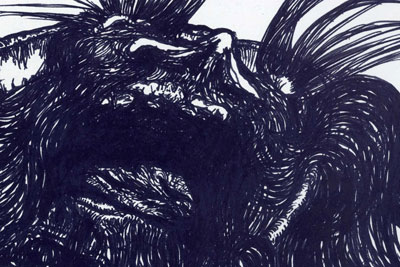Room 3
«In our case, the Baptist’s head has become the object, the symbol, the world of infinite pain and the most desperate despair. Testori took on the part, alongside that of the executioners, of tearing off the Baptist’s head with all its threads, flesh and, above all, blood. In fact, the artist has succeeded so well in this work of dissection and identification that he leaves the spectator in the hands of the artist who becomes a creator, albeit a creator in death. But the album of these drawings also has a divinatory force, in the sense that it is a prelude to what will be Testori’s evolution after 1968, his harrowing descent into hell. Throughout all these years Testori has in some way challenged his and our God, in an attempt to repeat the very story of Creation: he has made himself both actor and victim, master and servant. But always proceeding together, without separating parts and roles: from that sacrificed head he has been able to extract the motion of life, that double register of expectation and defeat that the poet Testori practices with lucidity but also with much obscurity.»
Carlo Bo, 1987
In 1968, during the writing of the play Erodiade, Testori drew with a fountain pen a large number of Baptist’s Heads torn by hooks and deformations: nine of them occupied a few pages of the handwritten notebook, letting themselves be framed by the text, while another 72, painted on similar notebooks, formed a numbered series.
The following year, he switched from human to animal heads and resumed painting in oils. The cycle of 72 heads was presented at the Centre Georges Pompidou in Paris in 1987, on the occasion of the staging of the play.




